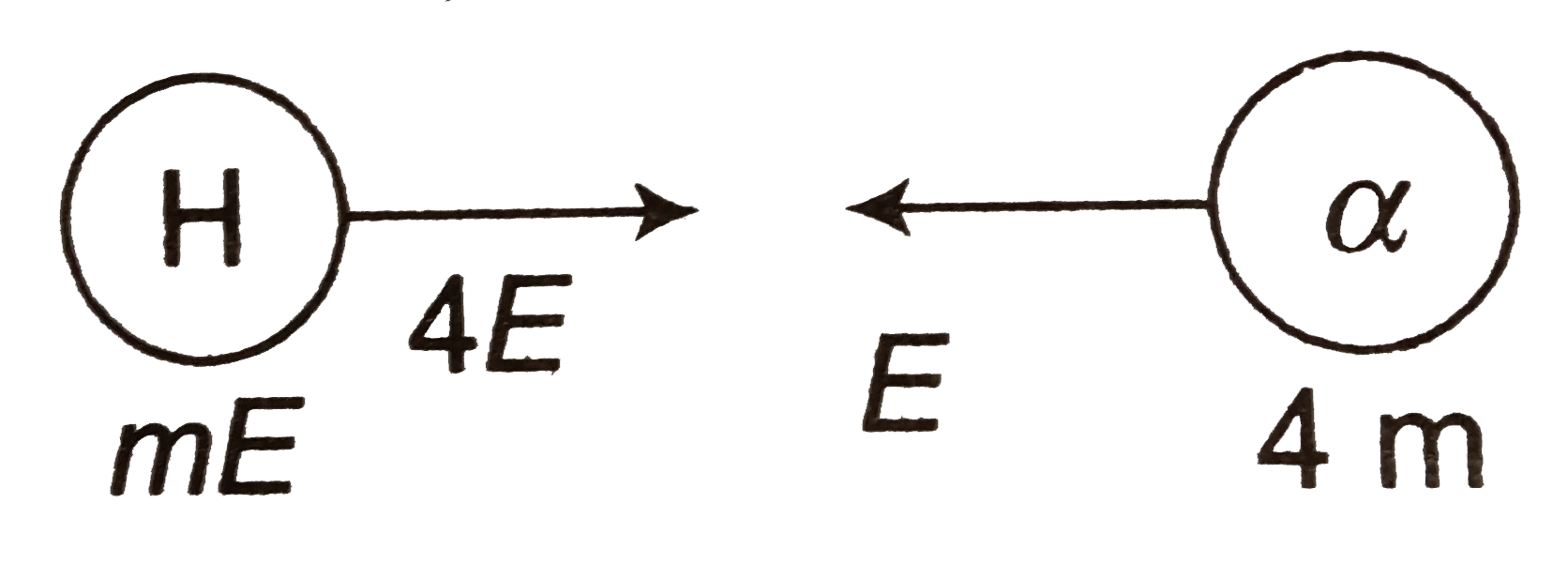An -particle with a kinetic energy of makes a head on collision with a hydrogen atom moving towards it with a kinetic energy of . The collision
must be perfectly elastic
may be perfectly inelastic
may be inelastic
must be perfectly inelastic
The correct Answer is:C

For completely inelastic collision both cone to rest after collision and net energy of is lost. But electron in ground state of -atom can accept only an energy of . hence the collision may be inelastic but it can never be perfectly inelastic.
Topper's Solved these Questions
- ATOMIC PHYSICSBook:A2ZChapter:ATOMIC PHYSICSExercise:Section B - Assertion Reasoning
Explore 13 Videos
- ATOMIC PHYSICSBook:A2ZChapter:ATOMIC PHYSICSExercise:AIPMT/NEET Questions
Explore 31 Videos
- ATOMIC PHYSICSBook:A2ZChapter:ATOMIC PHYSICSExercise:Atomic Spectrum
Explore 53 Videos
- ALTERNATING CURRENTBook:A2ZChapter:ALTERNATING CURRENTExercise:Section D - Chapter End Test
Explore 30 Videos
- CURRENT ELECTRICITYBook:A2ZChapter:CURRENT ELECTRICITYExercise:Section D - Chapter End Test
Explore 29 Videos
Similar Questions
A particle moving with kinetic energy E makes and head on elastic collision with an identical particle at rest. Durig the collision
View SolutionA particle moving with kinetic energy K makes a head on elastic collision with an identical particle at rest. Find the maximum elastic potential energy of the system during collision.
View Solution
Knowledge Check
A neutron moving with a speed v makes a head-on collision with a hydrogen in ground state kept at rest which inelastic collision will be take place is (assume that mass of photon is nearly equal to the mass of neutron)
A10.2 eVB20.4 eVC12.1 eVD16.8 eVAn electron with kinetic energy =E eV collides with a hydrogen atom in the ground state. The collision will be elastic
Afor all values of EBfor E<10.2eVCfor E<13.6eVDonly for E<3.4eVIn an inelastic collision, the kinetic energy after collision
Ais same as before collisionBis always less than before collisionCis always greater than before collisionDmay be less or greater than before collision
A particle moving with kinetic energy =3J makes an elastic head-on collision with a stationary particle which has twice its mass. During the impact :-
View SolutionA particle moving with kinetic energy=3 J makes an elastic head-on collision with a stationary particle which has twice its mass. During the impact:
View SolutionThe de broglie wavelength of electron moving with kinetic energy of 144 eV is nearly
View SolutionAn electron with kinetic energy 5eV is incident on a hydrogen atom in its ground state.The collision
View SolutionA hydrogen molecule in excited state travelling in the x-direction with kinetic energy of 1.0 eV dissociate into two hydrogen atoms. If one of themn moves perpendicular to the x-direction with a kinetic energy 1 eV. Then the energy released in te dissociation reaction will be
View Solution

